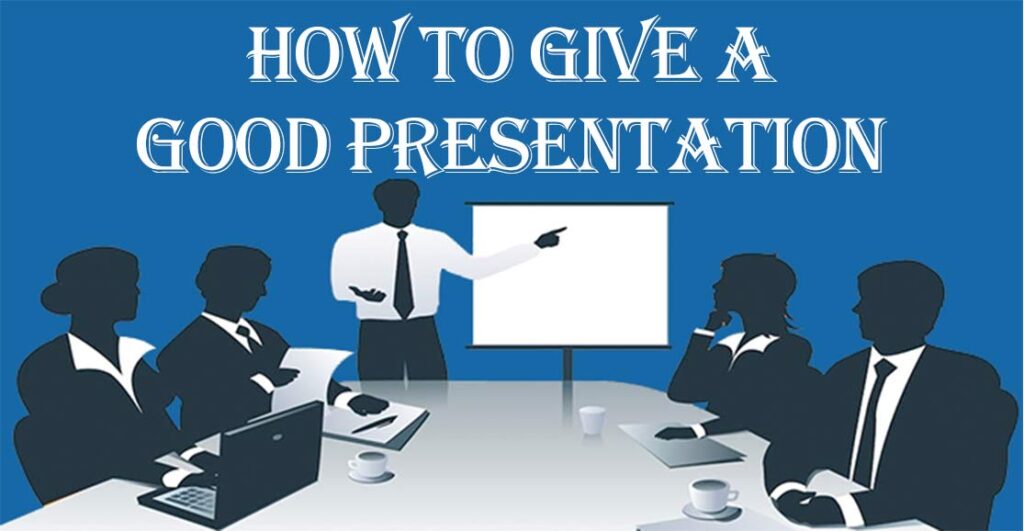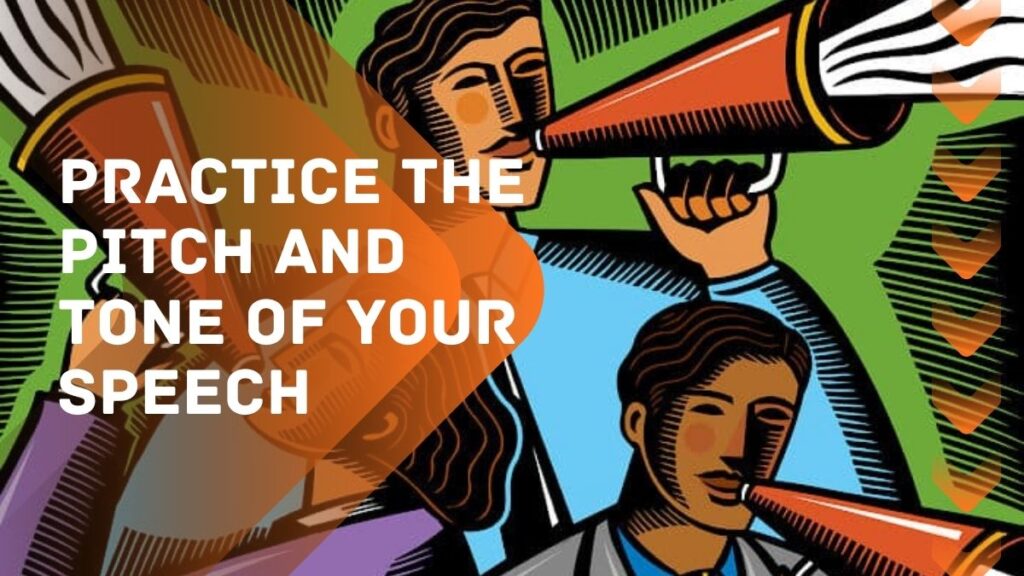When it comes to college life, you not only have to write your assignments and fill up the sheets but also have to give oral presentations, i.e. presenting a certain topic with different goals, such as informing the audience of the facts or convincing it about an opinion.
Many students face difficulties while giving presentations. Some of the main challenges they face are:
- Lack of confidence: It is natural to feel anxious in front of an audience, but it’s possible to overcome this fear with practice. For the first-timer, it is advisable to practice in front of your friends and family. More you practice, the more confidence you will gain.
- Lack of content: It is essential to have good content. Do your research properly and be well-informed about the topic you are presenting. A presentation should be structured as bullet points and diagrams. You can add notes to the presentation that only you can see as a reference.
- Lack of preparation: When it comes to giving a presentation, you must be well-prepared. Have a well-organized script that should consist of an introduction, body, and conclusion. Be prepared to answer questions from the audience as well.
and so on.
Tips on How to Give a Killer Presentation

When you are going to give a presentation that matters, here are some tips that might help you out:
1. Will Yourself to be Confident: Confidence is something that comes from the inside. One should have the courage to speak proudly. And confidence plays a major role when it comes to giving a presentation.
Many students get tensed before the presentation and ruin it due to fear and hesitation. If you are one of these scaredy cats, here’s a simple fix. Start imagining yourself standing in front of your friends. Though they make fun of you and laugh often, when it comes to a presentation, they show up with the most serious faces. It helps you overcome your hesitation.
Ponder on where this fear stems from. Do you feel that people are staring at you as if you are a treat?
Once you start thinking logically, they are not cannibals. They are normal people. Even if you perform phenomenally bad, they ain’t gonna eat you up.
So don’t let your hopes down. Stay confident. Fake it until you make it.
Alternatively, adopt a confident mindset by visualizing yourself as a superstar on stage. To channel your inner star on stage, follow these expert techniques:
- Visualization: Before stepping onto the stage, take a moment to visualize yourself as a confident and captivating performer. Picture yourself commanding the stage, engaging the audience, and receiving thunderous applause. Embrace the emotions associated with being a star, such as charisma, poise, and self-assurance. This mental rehearsal can help you embody that star quality when you’re in the spotlight.
- Positive Self-Talk: Replace self-doubt with positive affirmations. Remind yourself of your talents, skills, and past successes. Repeat empowering phrases such as “I am a star on stage,” “I have what it takes to shine,” or “I am captivating and confident.” This positive self-talk helps build your self-belief and fuels your inner star.
- Embrace Your Unique Style: Celebrate your individuality and let your personality shine through your performance. Recognize your strengths, quirks, and distinctive qualities that make you stand out. Embrace your unique style of expression and bring authenticity to your stage presence. When you’re true to yourself, you exude star power naturally.
- Energize Your Body: Engage in pre-performance rituals that energize your body and mind. This can include dynamic stretches, deep breathing exercises, or even a short dance routine. Activate your body’s energy and release any tension or nervousness. By physically preparing yourself, you’ll feel more grounded and ready to shine.
- Confidence-Boosting Mantras: Create a set of personal mantras that boost your confidence and motivation. Repeat these affirmations backstage or before you step onto the stage. Examples include “I am a star, and this is my moment to shine,” “I radiate confidence and captivate every audience member,” or “I own the stage and deliver a mesmerizing performance.” These mantras help rewire your mindset for success.
2. Know Your Audience: You should know who is sitting in front of you so that you can perform accordingly. If you have no idea whom you will address, try to figure it out while giving a speech.

Some audiences do not prefer a long presentation while others will always want to know more. Knowing your audience helps you to plan your presentation accordingly. Interacting with your audience while giving your presentation is a good trick to keep it interested and engaged.
Knowing your audience before giving a presentation is crucial for delivering a tailored and impactful message. Here’s how you can gather information and insights about your audience:
- Research the Demographics: Find out key demographic details such as age, gender, occupation, education level, and cultural background. This information will help you understand their perspectives and customize your content accordingly.
- Engage in Pre-Presentation Surveys or Interviews: If possible, conduct surveys or interviews with a subset of your audience before the presentation. Ask questions related to their interests, needs, challenges, and expectations. This direct interaction provides valuable insights that allow you to address their specific concerns effectively.
- Leverage Social Media and Online Platforms: Explore social media profiles, websites, or online forums relevant to your audience. This can provide valuable clues about their interests, preferences, and trending topics. Analyze their discussions, comments, and shared content to gain a deeper understanding.
- Collaborate with Event Organizers or Hosts: Reach out to the event organizers or hosts to gather information about the audience. They may have insights about the attendees’ backgrounds, motivations, or reasons for attending the event. They can also share any specific goals or themes for the presentation.
- Prioritize Audience Analysis During the Presentation: Pay attention to the audience’s non-verbal cues, reactions, and engagement during your presentation. Adjust your pace, tone, and content based on their responses. Stay open and responsive to their questions, allowing for interactive discussions that address their specific interests and concerns.
3. Gestures and Body Postures: We all know that body language plays a major role in giving presentations. Why so? Because when you are giving a presentation, you have to express it and that can’t be done just by speaking like a robot – without any expressions.
Gestures play a major role in the presentation. Have you ever been to a presentation where a person is giving his or her speech by doing a cartwheel or by standing upside down on his or her hands and then providing the presentation? No, right?
One needs to maintain a particular body posture throughout the presentation. Other things you may have to take care of include your gestures, hand movements, facial expressions, etc. If you are giving a presentation that matters to your grades or career, you must take care of these little things as well. Even the smallest details may become a big issue later diminishing the effectiveness of your presentation.
Power poses can help boost your confidence and presence while giving a presentation. Here are a few power poses you can adopt:
- The Superman/Wonder Woman Pose: Stand tall with your feet shoulder-width apart, place your hands on your hips, and lift your chest. Imagine yourself as a superhero, radiating confidence and strength. This pose opens up your body and helps you project a commanding presence.
- The Victory Pose: Raise your arms above your head in a V-shape, similar to a winning athlete. Stand straight, keep your shoulders back, and hold the pose for a few seconds. This pose helps increase feelings of power and dominance, boosting your overall confidence.
- The CEO Pose: Sit or stand with your legs crossed and your hands resting behind your head. Lean back slightly and maintain an open posture. This pose conveys a sense of authority and self-assurance, making you appear more confident and in control.
- The Warrior Pose: Stand with your feet wide apart, turn one foot outward, and lunge forward while keeping your hands on your hips. This pose exudes strength and determination, helping you feel grounded and empowered.
- The Raised Fist Pose: Clench your fist and raise it triumphantly in the air. This pose symbolizes strength, determination, and resolve. It can help you tap into your inner power and boost your confidence.
4. Tone: The pitch and the tone are very important when you want to emphasize certain points of your presentation. Your tone should always be decent and accurate.
Talking too loudly can make you sound aggressive while talking too softly may you sound timid. You must also be aware of your pitch. Unlike a song or a musical set, the pitch of a presentation should be set at a specific level. Mixing up low and high pitch levels can ruin an academic presentation.

Maintaining the correct pitch and tone during an academic presentation is crucial for conveying your message effectively. Here are some tips to help you achieve this:
- Practice and Rehearse: Familiarize yourself with your presentation content by practicing it multiple times. Pay attention to your pitch and tone during rehearsal to identify areas that need improvement. Practice allows you to refine your delivery and become more comfortable with the material.
- Start with a Strong Opening: Begin your presentation with confidence and energy. Establish a clear and engaging tone from the very beginning to captivate your audience’s attention. A strong opening sets the tone for the rest of your presentation.
- Vary Your Pitch: Monotonous delivery can make your presentation sound dull and uninteresting. Use pitch variations to add emphasis, express enthusiasm, and convey important points. Increase your pitch slightly to highlight key ideas and decrease it for more serious or reflective moments.
- Speak Clearly and Enunciate: Ensure your words are pronounced clearly and accurately. Articulate each word with precision to help your audience follow along effortlessly. Pay attention to any specific technical terms or complex vocabulary and make sure to pronounce them correctly.
- Use Pauses Effectively: Incorporate deliberate pauses in your speech to add emphasis and allow the audience to digest information. Pauses can also help you maintain a steady pace and avoid rushing through your presentation. Take a breath before important points or transitions to maintain a calm and controlled delivery.
5. Content: Last but not least, check the content of your presentation.
First, you need to make sure about the audience type you are dealing with. Then you should make sure about how much you should extend your topic according to the situation ad audience.
Your content should be appropriate and accurate, plus it should be knowledge-based so that the audience may also appreciate your hard work because in the end who doesn’t wants to hear a loud hooting and a round of applause with a few whistles blowing out loud? So make sure your content is stuck to the topic ad that the audience could relate to it.
If in the end, you are feeling like something is missing, then you can put on a feedback round where you can give a questionnaire to the audience regarding the presentation so that you could improve your presentation skills with time.
And of course, if you haven’t planned a feedback session then it is difficult to be done so instead you can just gently ask if anyone from the audience has something to say or ask about.
Through the above-mentioned tips, you surely can seal the deal and rock in the presentation. Just don’t hesitate, BE YOU!


